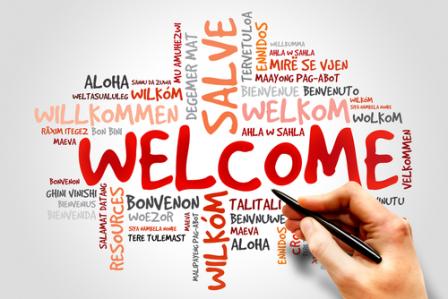Tips for Talking with Non-Native English Speakers
Have you ever struggled to communicate with someone whose first language was not English? Today the world is far more global, and we often interact with brave people who choose to communicate in a second (or third, or fourth) language. Lisa B Marshall, aka The Public Speaker, describes what you can do to help the conversation go smoother.
Lisa B. Marshall
I recently wrote about communication etiquette for non-natives, and decided I needed to do the same for native speakers. For simplicity, we’ll assume English is the target language, but these principles would be true for any language.
When someone is trying to communicate with you and doesn’t speak English natively, you may run into some communication problems. It’s important to know the best way to handle the situation, not only in order to communicate information, but also to develop a positive relationship. Just remember the 4 S’s: Slow, Simple, Slang, Support.
SLOW: Be sure to speak slowly and clearly. You may have to repeat yourself, or use a different choice of words if the person isn’t familiar with your vocabulary. Remember, English has one of the largest vocabularies in the world—over a million words! Most languages have only a fraction of that. This leads to the next S …
SIMPLE: As stated above, English has such a rich vocabulary that we can often forget non-natives don’t learn all those words right away. So stick to familiar words, like ‘dog’ rather than ‘canine.’ This is no time to pull out the Thesaurus. Our sentence structure can also get very complex, so keep the sentences short and simple, and in the active tense. For instance, “The boy threw the ball” is active tense. “The ball was thrown by the boy” is passive tense, and less clear to the non-native. And saying, “The ball was thrown by the boy as he was running across the yard while being chased by his overly-zealous puppy” is just not fair! Be nice. Break it up.
SLANG: This is actually a NOT. Do NOT use slang. Try to avoid idioms, acronyms, contractions, and fillers, too. “He was feeling under the weather, y’know? And I was, like, I hope he isn’t gonna kick the bucket or something. OMG!” Can you imagine the crazy visual images this could create in someone’s mind? He or she certainly wouldn’t get the idea that you were talking about a sick person! Obviously, this is an extreme example, but you get the point. Clear, concise, precise.
SUPPORT: Here’s a person who is doing something that takes a lot of courage: speaking a foreign language to a native. Give her lots of positive encouragement, so she keeps working at it. Be patient, don’t finish her sentences unless she’s really struggling to be understood. In that case, you can suggest what you think she means. Nod and smile to let her know you’re listening and interested. Use relaxed and attentive body language. If you don’t understand something, don’t blame her and say,“Your accent’s too thick,” or “You’re not making sense.” If anything, take the blame yourself: “I’m sorry, I’m having a little trouble understanding the last part. Could you repeat it, please?” Restate what the person said in different (simple!) words to see if you understood.
Using these 4 S’s will help you communicate well and build relationships with your ESL friends or colleagues. And hopefully, when you’re trying to speak another language, those people will give you that same courtesy.
For more details, you can look at my articles, How to Speak to a Non-Native English Speaking Audience and Are You Making These Common Communication Mistakes.
This is Lisa B. Marshall helping you to lead and influence. If you’d like to learn more about compelling communication, I invite you to read my bestselling books, Smart Talk and Ace Your Interview and listen to my other podcast, Smart Talk. As always, your success is my business.
Image courtesy of Shutterstock.

